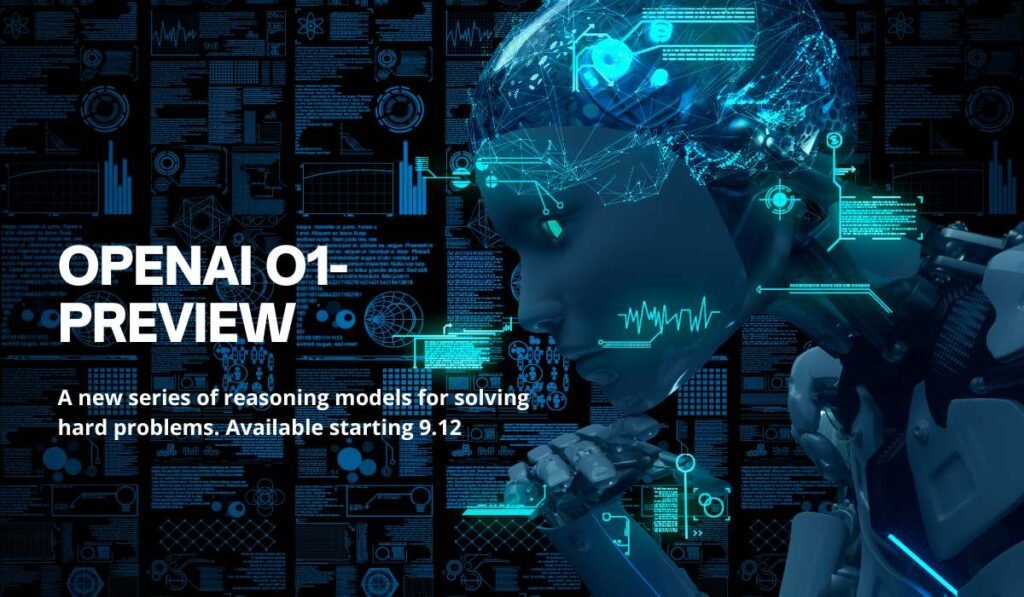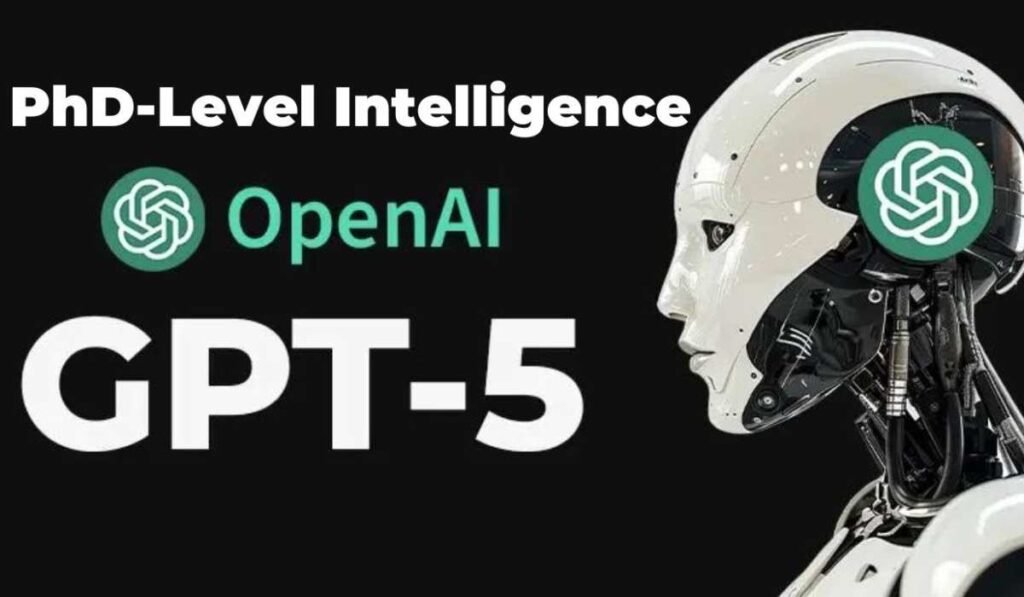Unveiling OpenAI’s latest breakthrough that rivals PhD-level reasoning across math, science, and coding.
Imagine an AI model that can think like a PhD graduate, reason through complex problems, and provide solutions that were once thought to be exclusive to human experts. OpenAI has just made this a reality with the unveiling of their highly anticipated OpenAI’s O1 Model series.
Today, we’re diving deep into OpenAI’s O1 Preview and O1 Mini, the new AI models designed to revolutionize complex reasoning tasks. From outperforming previous models in physics, chemistry, and biology to reaching unprecedented heights in mathematics and coding, the O1 series is set to transform the landscape of artificial intelligence. Let’s explore how these models work, their capabilities, and what this means for the future of AI.
Introduction to the OpenAI’s O1 Model
The AI community has been buzzing with anticipation, and OpenAI has finally delivered. The OpenAI’s O1 Model series, including the O1 Preview and O1 Mini, represents a significant advancement in artificial intelligence capabilities. These models are designed to spend more time thinking before responding, enabling them to reason through complex tasks and solve problems that were previously out of reach for AI.
Available starting today on ChatGPT and through OpenAI’s API, the O1 series is set to push the boundaries of what AI can achieve in fields like science, coding, and mathematics. With regular updates and improvements planned, OpenAI is resetting the counter back to one and naming this groundbreaking series as OpenAI O1.
How the O1 Series Works
While OpenAI hasn’t disclosed the intricate details of how the O1 models function, they have shed some light on their methodology. The O1 series is trained to emulate human-like thinking processes, spending more time contemplating problems before providing responses—much like a person would when faced with a complex issue.
Through advanced training techniques, these models learn to refine their thinking process, experiment with different strategies, and recognize and correct their mistakes. This approach allows them to apply more effective reasoning during tasks, leading to significantly improved performance over previous models like GPT-4.
Key Features of the O1 Series:
- Extended Thinking Time: By allocating more time to problem-solving, the models can tackle more complex tasks effectively.
- Refined Reasoning Capabilities: Training emphasizes the development of sophisticated reasoning strategies.
- Self-Correction Mechanisms: The models can identify and correct their errors during the reasoning process.
Unprecedented Performance in Reasoning Tasks
The O1 series has demonstrated remarkable capabilities across various challenging benchmarks, often exceeding human performance levels.
Mathematics Breakthroughs
In a qualifying exam for the International Mathematics Olympiad, the O1 reasoning model scored an impressive 83%, a substantial leap from the 13% achieved by GPT-4.
Mathematics Performance Comparison:
| Model | Score on IMO Qualifier |
|———————-|————————|
| GPT-4 | 13% |
| O1 Preview | 56% |
| O1 Reasoning Model | 83% |
This level of performance indicates that the O1 model is capable of solving high-level mathematical problems that challenge even the brightest human students.
Advancements in Coding
When evaluated in code competitions, the O1 model reached the 89th percentile in Codeforces competitions, outperforming many experienced human programmers.
Coding Performance Highlights:
- Codeforces Competitions: Achieved 89th percentile.
- Exceeded Previous Models: Significant improvement over GPT-4’s performance.
These results showcase the model’s ability to handle complex coding tasks, debug intricate code, and generate robust programming solutions.
Exceeding Human Expertise in Science
In challenging benchmark tasks across physics, chemistry, and biology, the next O1 model update performed similarly to PhD students, and in some cases, even exceeded human expertise.
Science Benchmark Results:
- Physics, Biology, Chemistry Problems: Surpassed human PhD-level accuracy.
- Consistent High Performance: Demonstrated excellence across a spectrum of scientific disciplines.
These achievements signify a new era where AI models can contribute meaningfully to scientific research and problem-solving.
O1 Mini: Efficiency Meets Excellence
Understanding the need for efficiency alongside capability, OpenAI has introduced the O1 Mini model. This version offers a balance between performance and cost, being 80% cheaper than the O1 Preview while still excelling in coding tasks.
Features of O1 Mini:
- Faster Response Times: Ideal for applications requiring quick reasoning.
- Cost-Effective: Significantly reduces expenses for developers and businesses.
- Coding Proficiency: Maintains high effectiveness in code generation and debugging.
With O1 Mini, developers have access to a powerful tool that doesn’t compromise on quality while being mindful of resource constraints.
Safety Enhancements and Alignment
Safety remains a paramount concern for OpenAI. The O1 series incorporates a new safety training approach that leverages the models’ reasoning capabilities to adhere strictly to safety and alignment guidelines.
Safety Improvements:
- Advanced Reasoning for Safety: Models can reason about safety rules in context, applying them more effectively.
- Jailbreak Resistance: On OpenAI’s hardest jailbreaking tests, the GPT-4 scored 22 out of 100, while the O1 Preview model scored 84.
- Monitoring Systems: Plans to utilize hidden chains of thought to monitor and ensure alignment without exposing unfiltered reasoning to users.
These measures ensure the O1 models maintain integrity and reliability, even when prompted with attempts to bypass safety protocols.
Implications for AI Agents and Research
The capabilities of the O1 series open up new possibilities for autonomous AI agents and research applications. With PhD-level reasoning skills, these models can be integrated into frameworks where multiple AI agents collaborate to solve complex problems.
Potential Applications:
- AI Research Assistants: Assisting in the creation of new scientific research and discoveries.
- Autonomous Problem Solving: Agents that can work independently on tasks requiring deep reasoning.
- Advanced Development Tools: Enhancing software development with sophisticated code generation and debugging.
As AI continues to evolve, the O1 models represent a step towards more intelligent and capable AI systems that can augment human efforts in various fields.
The Future of AI with the O1 Series
OpenAI’s introduction of the O1 series signifies a shift in the AI landscape. By resetting the model naming convention and focusing on these new reasoning models, OpenAI indicates that the O1 series is the future direction of their AI development.
Looking Ahead:
- Regular Updates: OpenAI plans to provide regular enhancements to the O1 models.
- Feature Expansion: Upcoming additions include browsing capabilities, file and image uploading, and more.
- Broad Accessibility: Aiming to make advanced AI reasoning accessible to a wider audience across different industries.
These developments suggest that the O1 series will become the foundation for future AI advancements, potentially leading to the much-anticipated intelligence explosion in artificial intelligence.
The release of OpenAI’s O1 Model series marks a pivotal moment in artificial intelligence. With unprecedented reasoning capabilities, the O1 series sets new standards in AI performance across mathematics, coding, and scientific problem-solving.
By emulating human-like thinking processes and incorporating advanced safety measures, OpenAI’s O1 models are poised to revolutionize how we approach complex tasks. Whether it’s assisting healthcare researchers, aiding physicists, or empowering developers, the O1 series opens doors to possibilities previously thought unattainable.
As we stand on the cusp of an AI-driven future, the O1 series exemplifies the remarkable progress being made. It’s not just an upgrade—it’s a transformative leap towards AI that thinks, reasons, and contributes at a level comparable to human experts.
OpenAI's O1 Model series, including the O1 Preview and O1 Mini, is a groundbreaking advancement in artificial intelligence designed to emulate PhD-level reasoning across math, science, and coding.
The O1 series allocates more time for problem-solving, refining its reasoning strategies through advanced training techniques, which allows it to tackle complex tasks more effectively than previous models.
Key features include extended thinking time for problem-solving, refined reasoning capabilities, and self-correction mechanisms that allow the models to identify and correct their mistakes during the reasoning process.
The O1 reasoning model scored 83% on a qualifying exam for the International Mathematics Olympiad, significantly outperforming GPT-4, which scored only 13%.
In coding competitions, the O1 model reached the 89th percentile in Codeforces, showcasing its ability to handle complex coding tasks and generate robust programming solutions.
The O1 model has demonstrated accuracy in physics, chemistry, and biology tasks that often matches or exceeds that of human PhD students, indicating its capacity to contribute to scientific research.
The O1 Mini is a cost-effective version of the O1 series that offers faster response times and maintains high coding proficiency while being 80% cheaper than the O1 Preview.
The O1 series includes advanced reasoning for safety, improved jailbreak resistance, and monitoring systems to ensure adherence to safety and alignment guidelines.
The capabilities of the O1 series enable new possibilities for AI research assistants, autonomous problem-solving agents, and advanced development tools, significantly enhancing AI's role in various fields.
OpenAI plans to provide regular updates and feature expansions for the O1 models, aiming to make advanced AI reasoning widely accessible across different industries and continue to push the boundaries of AI capabilities.





